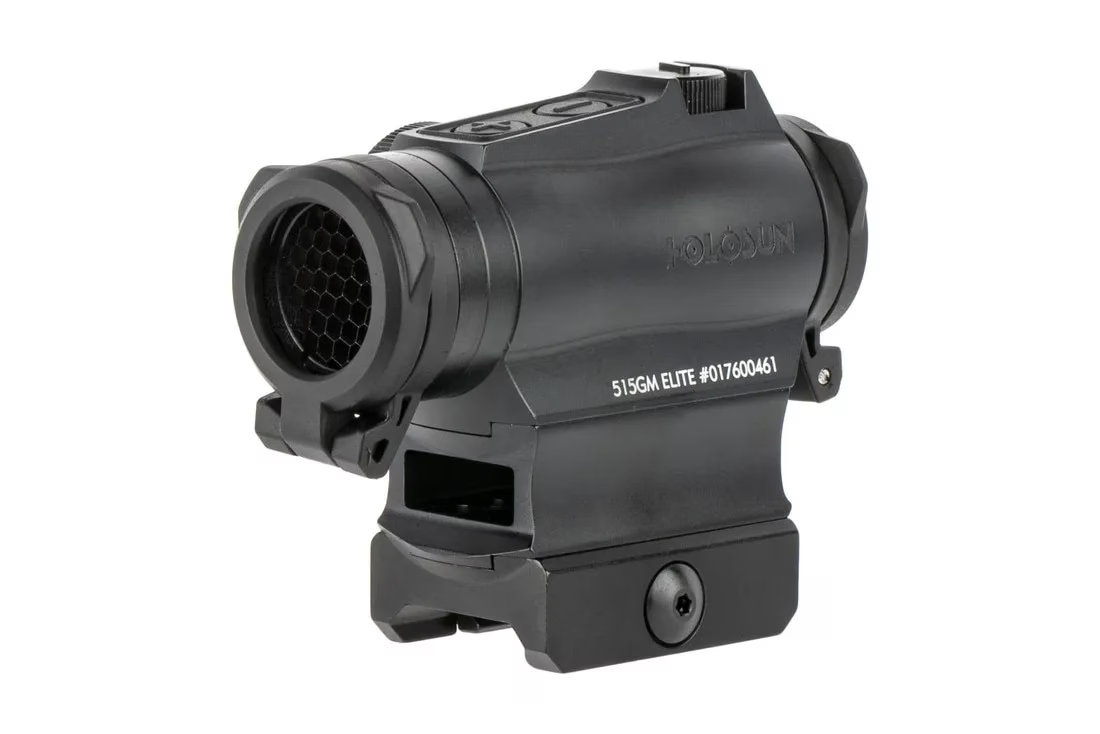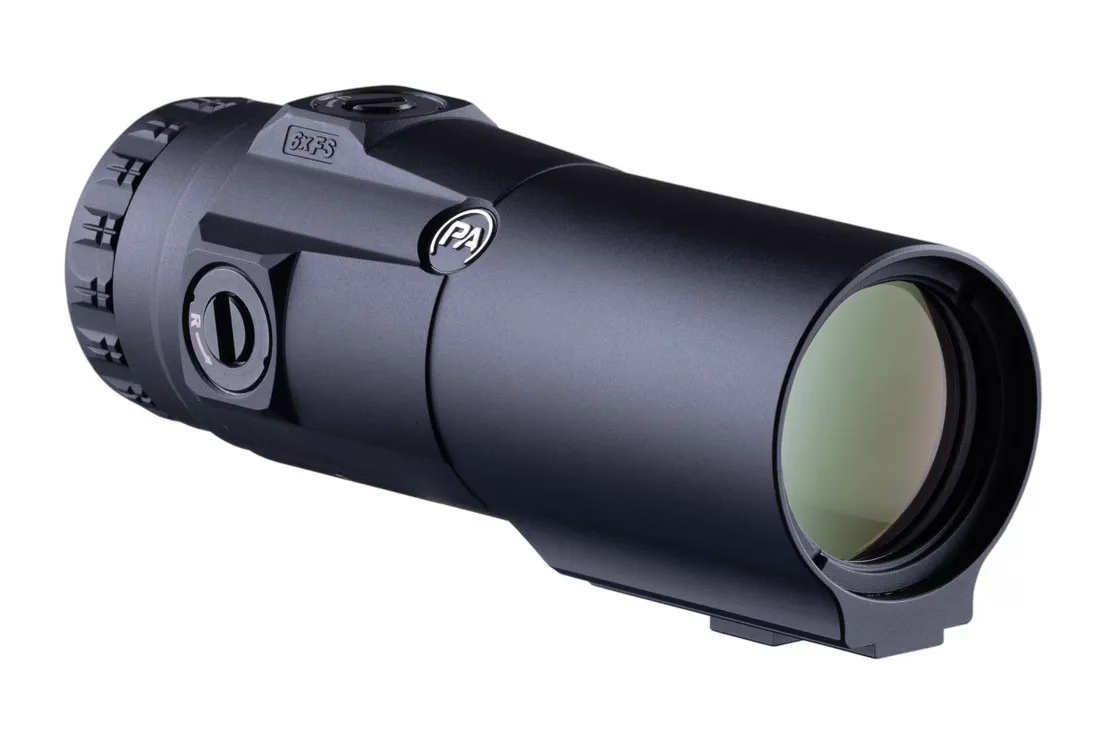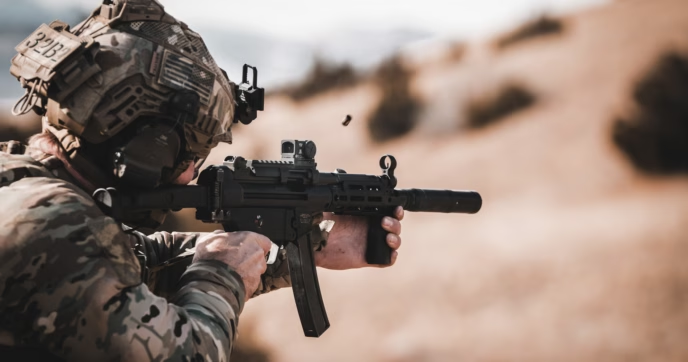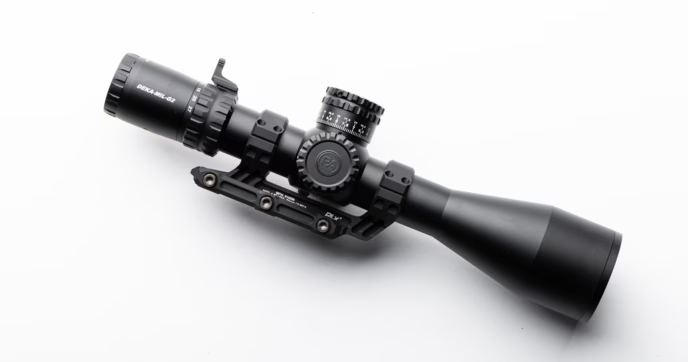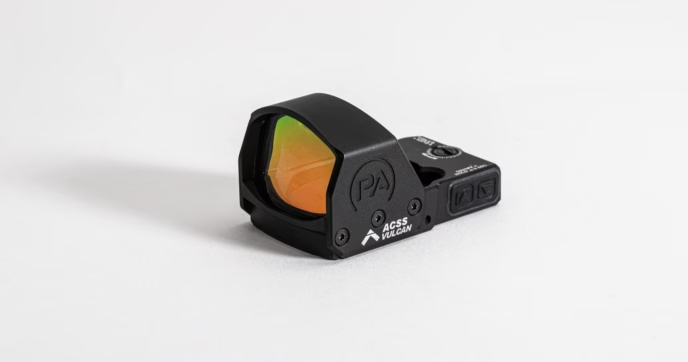On their own, red dot sights are fantastic optics, but when paired with a magnifier, they can significantly enhance your rifle’s versatility. Red dot sights emphasize speed and agility, so they’re a perfect choice for dynamic applications like personal defense, duty, and competitive use. On their own though, your rifle’s ranged capabilities are going to be significantly limited, even if you opt for an optic with a more complex reticle that has BDC or other ranging elements.
With training, it’s more than possible to hit targets at or around 200 yards with just a red dot sight, but the further out your targets are, the harder it’s going to be to consistently and accurately hit them. So, if you run a red dot on a general-purpose build that can be suitable for multiple applications, you’ll want to have a good magnifier to extend the usable range of your rifle—a topic we cover in-depth in our Red Dot Range Guide for AR-15s.
For such applications, magnifiers can transform your rifle setup into one that can effectively and precisely engage targets at both close- and medium-range. But, before you rush into buying one, it’s critical that you understand how they work and perform.
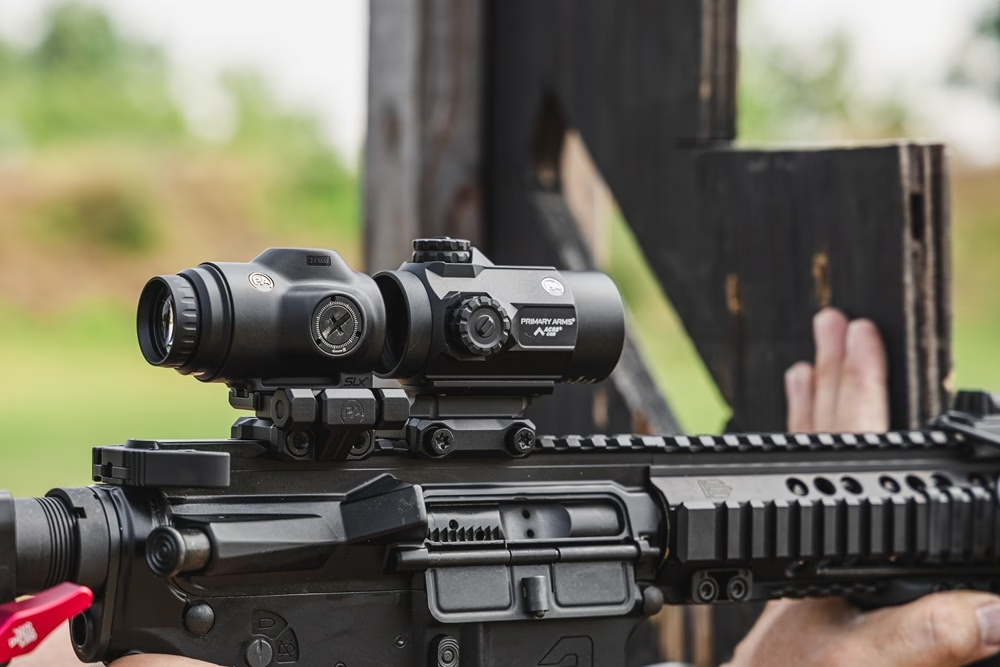
Understanding Red Dot Magnifiers
So, what exactly are red dot magnifiers? Magnifiers are a type of optic that mounts behind your reflex sight and has a fixed magnification level, allowing you to see a magnified view of your target and reticle—they’re essentially a prism scope, just without a reticle. Commonly offered in either a 3x, 5x, or 6x magnification, there are a lot of options to choose from that cater to different individual needs and preferences.
For greater adaptability, magnifiers are typically mounted on a hinging mount which can flip it off to the side, allowing you to quickly switch between magnified and un-magnified use. This is especially beneficial in more dynamic applications like competitive, defensive, and duty scenarios where you’re more likely to engage targets across close- and medium-ranges.
While magnifiers can enhance your rifle’s long-range capabilities, your ability to properly engage targets is going to fall primarily on whatever reflex sight you choose to run, as well as the reticle it houses.
Reflex Sights: How Do They Work?
Red dot sights are typically the first optic that comes to mind when hearing the phrase, “reflex sight” but the term actually encompasses multiple optics—those being: red dot sights, open-emitter reflex sights, and holographic sights.
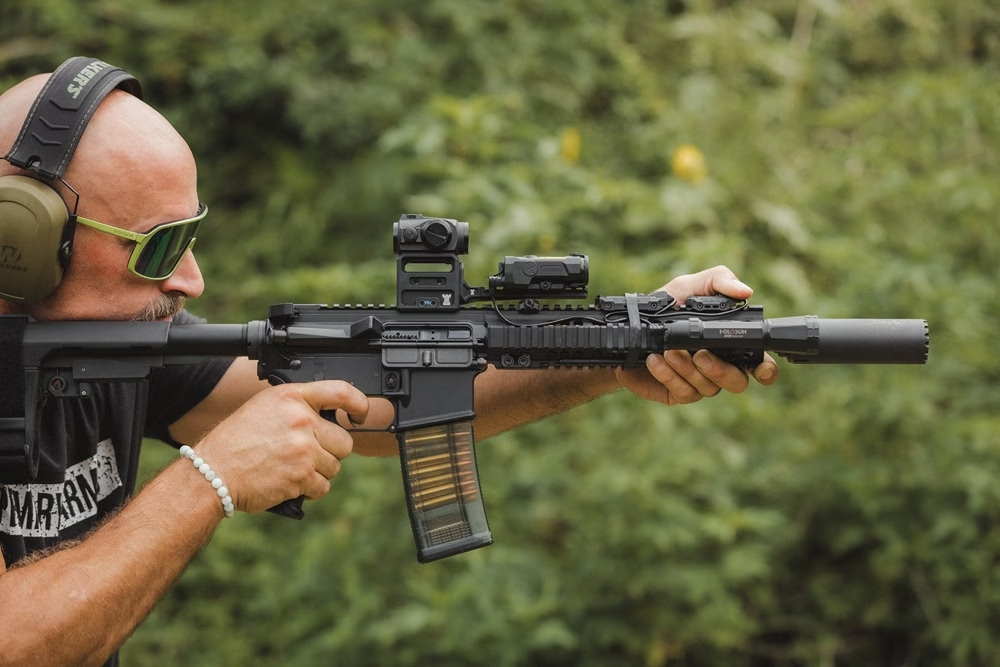
Red Dot Sights
Red dot sights are the optic that’s most often used on rifles like the AR-15 and other similar platforms. Using an enclosed design and two lenses, these optics offer exceptional durability, protecting the emitter and internals from outside elements like dirt and other debris. Compared to open-emitter optics, they have a slightly narrower field of view, but they’re still a solid pick for most applications. Plus, although they’re most commonly available with just one reticle color, there are specialized options like the Vortex StrikeFire II that can freely switch between red and green with just a button press.
Being one of the most common rifle optics available, there are a lot of red dot sights to choose from, and they generally perform extremely well with magnifiers; so long as the mount heights match, you should be able to run a magnifier with no issues. That said, it can be a be a bit tricky to run a magnifier with a micro red dot at times, but with the right mount, it’s doable. We also have another article all about the advantages of micro red dots too; we recommend checking it out if you plan on running one.
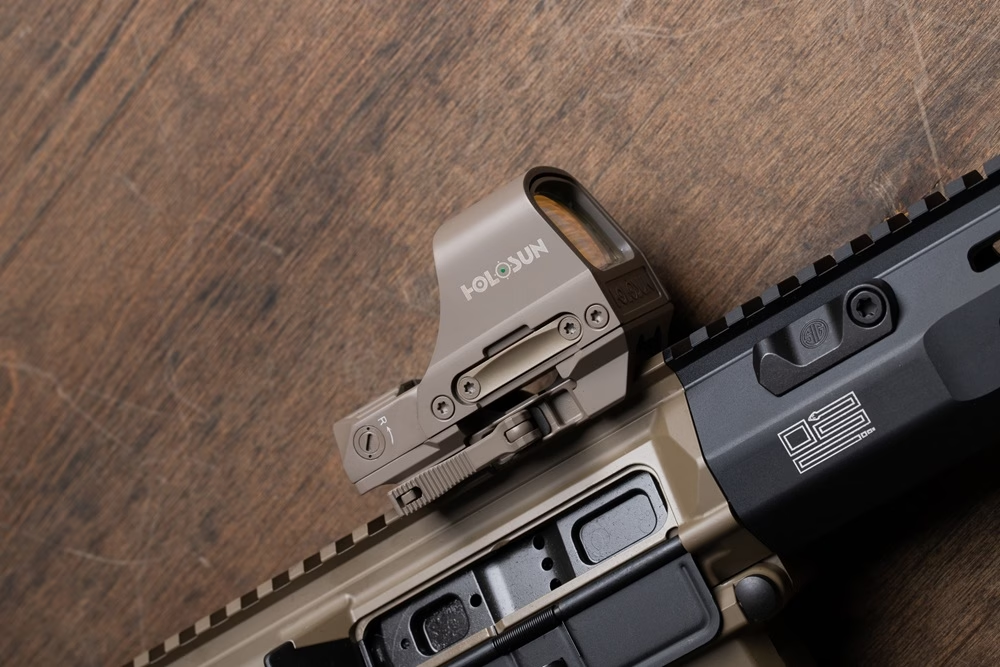
Open-Emitter Reflex Sights
Most often used on handguns, open-emitter reflex sights, as their name suggests, feature an open design that offers an incredibly wide field of view compared to other reflex sights. By design though, their open design leaves the emitter diode exposed, meaning you’ll need to be a bit more weary of environmental debris like dirt, dust, and water. Regardless, they’re a solid pick, offering performance that’s on par with red dot sights—models like the Holosun 510C are one of, if not, the most popular full-size open-emitter optics for rifles.
Although there aren’t as many full-size open-emitter reflex sights compared to red dot and holographic sights, they perform very well with magnifiers and can be a solid choice for their wide FOVs alone.
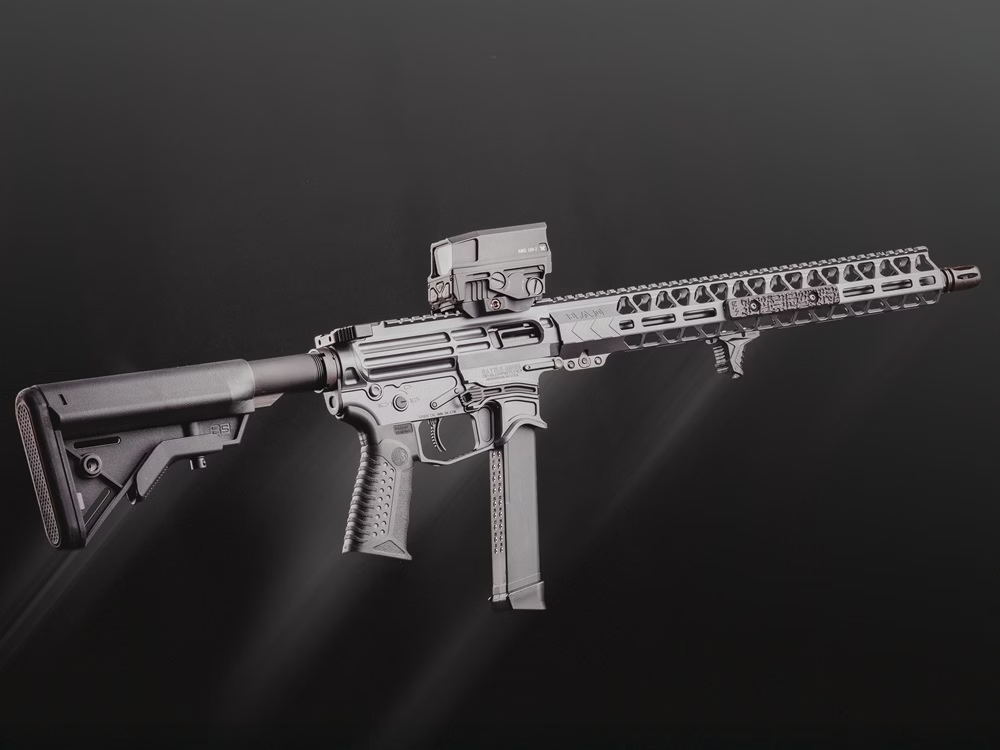
Holographic Sights
Lastly, holographic sights are the most unique reflex sight option. Like red dot sights, they use two lenses and have an incredibly durable optic body, but rather than collimating light onto the lens directly, holographic sights use a more complex projection system. Using a laser emitter diode, the light is reflected off several surfaces to create a holographic reticle that floats between the optic’s lenses.
There aren’t as many holographic sight options available compared to red dot sights, as they’re currently only produced by EOTech and Vortex Optics. That said, it’s important to note that holographic sights offer incredible reticle and target image clarity when using a magnifier, making them some of the most popular optics for the job.
Which Reflex Sight Performs Best when Magnified
Generally, each of the reflex sights mentioned above perform exceptionally well when paired with a magnifier. Of the three, however, holographic sights are often touted to offer the best performance when magnified, specifically when referencing EOTech optics. EOTech holographic sights use a laser diode instead of an LED diode, so they’re capable of projecting a much finer 1-MOA center dot. Because of this, they offer an extra modicum of precision when magnified, since the center dot stays 1-MOA in size.
It’s often erroneously believed that red dot and open emitter sights become less precise when magnified because the reticle increases in size, but this isn’t really the case. Just like with an EOTech, your reticle is still going to be the same size down range with or without a magnifier. For example, if you’re running an optic like the SIG Sauer Romeo 4T which uses a 2-MOA center dot in conjunction with a magnifier like the SIG Sauer Juliet 3, even though your reticle will become bigger when looking through the magnifier, so will your target. So, your reticle is still going to be 2-MOA, it’s just going to appear bigger since both it and your target image are magnified.
So, regardless of whether you opt for a holographic, red dot, or open-emitter reflex sight, a magnifier will still be able to provide you with good precision and adaptability at varying distances.
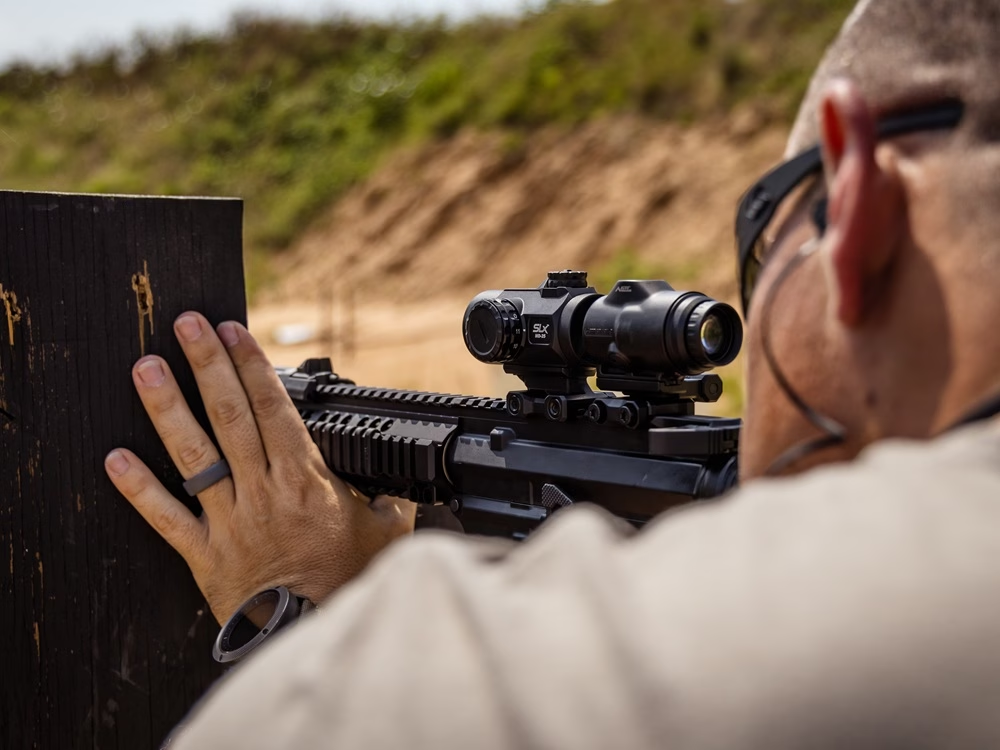
Choosing a Magnifier for your Red Dot Sight
A lot of new enthusiasts are typically under the impression that they need to keep brands with brands when shopping for a red dot and magnifier. However, this isn’t necessary. We covered this in our guide on Red Dot Magnifier Combos for an AR-15, but magnifiers are relatively brand agnostic. So long as the mount heights match, you can mix and match just about any brand of magnifier with any brand reflex sight. That said, many enthusiasts typically match brands for a variety of reasons, ranging from aesthetics to brand partiality. One of the foremost reasons for matching brands is the fact that many of them offer optic and magnifier combos.
Optic and Magnifier Combos
If you’re looking to simplify the buying process, opting for an optic and magnifier combo can do just that, giving you an optic setup that’s ready for use out of the box. Several brands offer packages with their optics and magnifiers, with there being solid budget options and premium ones as well.
For starters, the Holosun HS510C red dot & HM3X Magnifier Combo is a solid budget-friendly choice. As we mentioned earlier, the HS510C is capable of projecting multiple reticles, has a wide FOV, and is fairly lightweight. The HM3x Magnifier is a solid magnifier in its own right, constructed around a durable aluminum housing that’s water and dust proof, it weighs only 9.8 ounces, and it comes standard with a QD flip mount. Together, they’re an excellent optic setup that weighs only 14.7 ounces and offers exceptional adaptability for only around $485.
For a more premium option, EOTech commonly packages their holographic sights with their magnifiers as well. Popular models like their EXPS3 series holographic weapon sights can come paired with either the EOTech G43 3x magnifier or their G45 5x model. Being a more premium option, they’re on the pricier side, hovering around the $1,300 to $1,400+ mark. But, if you’re looking for a duty-grade optic and magnifier that offers top-tier reliability, they’re easily some of the best optic and magnifier combos available.

Maximizing Performance
To maximize your rifle’s magnified performance, it’s imperative to make sure that you have the right reticle for the job. While a standard 2-MOA dot is still effective when magnified, they don’t offer any target ranging info or ballistic drop holds, limiting their overall capabilities in medium-range engagements. This is where specialized options like the ACSS® Reticle System and circle-dot reticles come into play.
For instance, the Primary Arms Optics SLx® MD-25 is available with the venerable ACSS® CQB reticle system, which features a bold outer horseshoe for quick target acquisition and leading moving targets, a center chevron for more precise aiming, and three BDC holds that can range out 600 yards when using 5.56 NATO.
In the same vein, circle dot reticles fill a similar role, as they most often feature a 65-MOA outer circle to provide an eye-catching element like the ACSS CQB reticle’s outer horseshoe. Meanwhile, they most commonly feature a 2-MOA dot in the center for precise aiming, and depending on the optic, they can also feature BDC elements. Arguably the most popular optic that uses circle dot reticles are EOTech’s optics, and models like the EXPS3-2 project a circle-dot reticle with two dots instead of just one for making holds at longer ranges.
Specialized Magnifiers
Another way to increase performance is with a specialized magnifier like the Primary Arms Optics SLx® Micro Magnifier. As we mentioned earlier, magnifiers are essentially a prism scope that has no reticle. While this is the case for most red dot magnifiers, PAO has crafted a version of their SLx Micro Magnifier that has an added ranging reticle.
Housed within select SLx Micro Magnifiers is the ACSS® Pegasus Ranging Reticle, a reticle that’s placed at the bottom of the magnifier. Rather than serving as a primary reticle system, it sits just below your main one, providing you with extra holds and ranging data for shots at further distances. As such, these magnifiers can be a solid choice, as they pair well with basically every reflex sight and reticle option.
Conclusion
Although reflex sights aren’t touted for their ability to engage targets at ranges past 100 yards, they’re more than capable of doing so when paired with a magnifier. A magnifier can be a game-changer for your rifle build, giving you the capability to engage targets across varying distances without adding too much bulk on top of your rifle.
If you plan to run a reflex sight and magnifier on your next rifle build, knowing what to look for is paramount to ensuring you end up with the right optic combo that maximizes performance. Ideally, you’ll want to opt for a reflex sight that has a complex reticle, and a magnification level that best suits your own personal needs and preferences.
Doing so will give you the most versatility possible, allowing you to engage targets at various distances. Plus, with all the different optic combos available, there’s no shortage of high-quality options to choose from.
